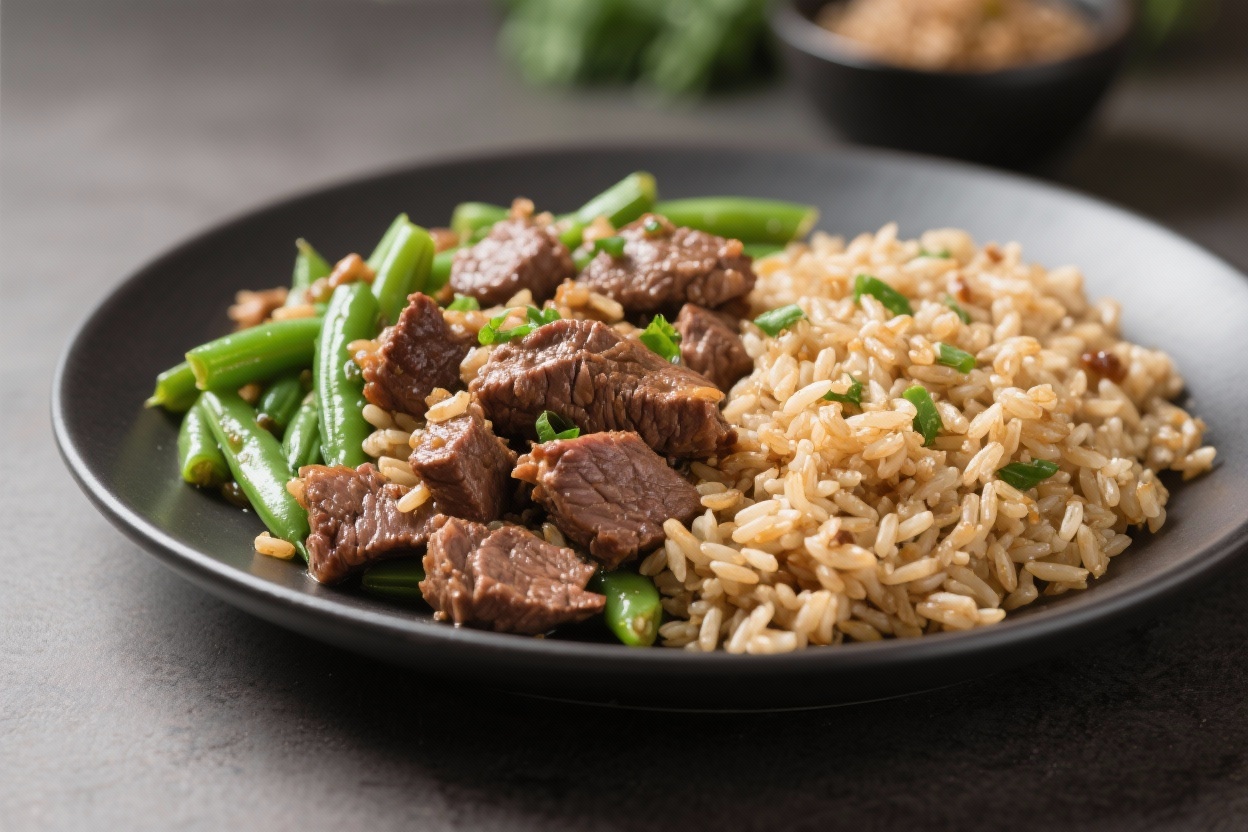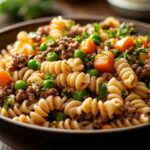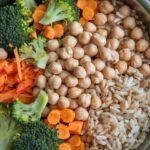Beef, Brown Rice & Green Beans – Balanced Dog Recipe – Simple, Nutritious, and Homemade
If you’ve been thinking about making your dog’s food at home, this recipe is a great place to start. It’s simple, budget-friendly, and uses whole foods you can feel good about. Ground beef provides protein and flavor, brown rice adds steady energy, and green beans bring fiber and vitamins.
With a few extra nutrients, it becomes a balanced meal you can serve with confidence. Your dog gets a tasty bowl, and you get peace of mind.
Beef, Brown Rice & Green Beans – Balanced Dog Recipe - Simple, Nutritious, and Homemade
Ingredients
- Lean ground beef (90–93% lean), about 2 lbs (900 g)
- Brown rice, 2 cups uncooked
- Green beans (fresh or frozen), 3 cups chopped
- Carrots, 1 cup finely diced (optional, for extra fiber and vitamin A)
- Beef or low-sodium chicken broth, 2–3 cups (optional, for moisture)
- Salmon oil or fish oil (per label dosing for dogs)
- Calcium source (ground eggshell powder or calcium carbonate; see dosing below)
- Dog-specific multivitamin/mineral (veterinary-formulated)
- Olive oil or coconut oil, 1–2 tablespoons (optional for extra calories)
- Water for cooking
Instructions
- Cook the brown rice. Rinse 2 cups of brown rice. Add to a pot with 4 cups of water.Bring to a boil, then cover and simmer until tender (about 35–40 minutes). Fluff and set aside.
- Brown the beef. In a large skillet or pot, cook the ground beef over medium heat. Break it into small crumbles and cook through.If very fatty, drain excess grease, but leave a small amount for flavor and calories.
- Steam the veggies. Steam or lightly boil chopped green beans (and carrots if using) until tender but not mushy, about 6–8 minutes. Drain.
- Combine in a large pot. Add cooked rice, beef, and vegetables. Stir to mix evenly.Add a splash of broth or water for moisture if needed.
- Add healthy fats and supplements after cooling. Let the mixture cool until just warm. Stir in salmon oil per your dog’s weight and the product label. Add the correct amount of calcium and your chosen dog multivitamin as directed.Oils and vitamins are best added off heat to preserve nutrients.
- Portion by your dog’s needs. Divide into daily servings. A general starting point is about 2–3% of your dog’s ideal body weight per day (total food), split into two meals. Adjust based on activity, age, and body condition.
- Serve and store. Serve slightly warm or at room temperature.Store the rest safely (see storage tips below).
Why This Recipe Works
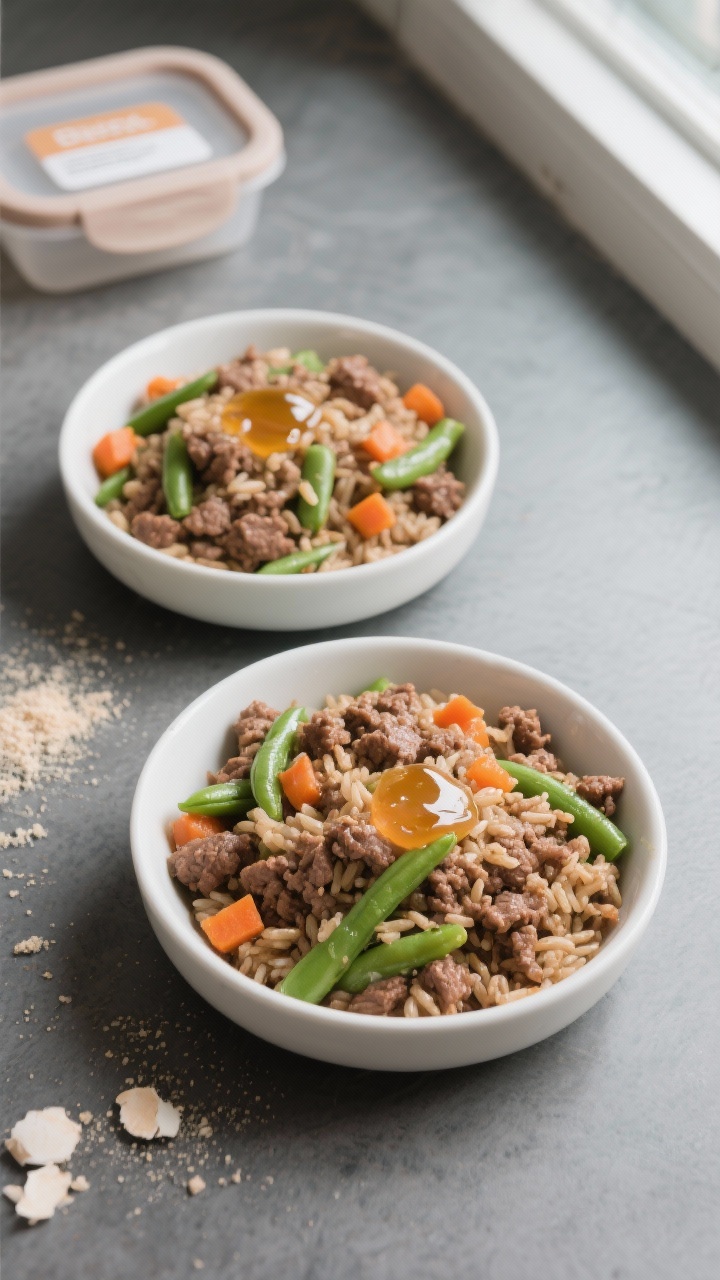
This recipe uses ingredients most dogs digest well. Beef is a highly palatable protein that helps maintain muscle.
Brown rice offers slow-release carbohydrates for sustained energy, and it’s gentler on many stomachs than some grains. Green beans add bulk and nutrients without a lot of calories, which can help with weight management. To make it truly complete, we include healthy fats and key micronutrients. Salmon oil or another omega-3 source supports skin, coat, and joints. Calcium is essential if you’re not feeding raw, meaty bones—dogs need it to balance phosphorus from meat.
A veterinary-formulated multivitamin/mineral helps cover trace nutrients like iodine, zinc, and vitamin E. With these additions, you get a wholesome, balanced meal suitable for regular feeding.
🍲 50 Printable Dog Food Recipes Your Pup Will Love
Skip the fillers and preservatives. Make healthy, homemade meals your dog will actually eat — using everyday ingredients you already trust. Vet-friendly, budget-friendly, and super easy to follow. 🐾
Perfect for picky eaters, senior dogs, and pups with sensitive stomachs. Make mealtime simple and nutritious again.
Get the Recipes Now 🐶Shopping List
- Lean ground beef (90–93% lean), about 2 lbs (900 g)
- Brown rice, 2 cups uncooked
- Green beans (fresh or frozen), 3 cups chopped
- Carrots, 1 cup finely diced (optional, for extra fiber and vitamin A)
- Beef or low-sodium chicken broth, 2–3 cups (optional, for moisture)
- Salmon oil or fish oil (per label dosing for dogs)
- Calcium source (ground eggshell powder or calcium carbonate; see dosing below)
- Dog-specific multivitamin/mineral (veterinary-formulated)
- Olive oil or coconut oil, 1–2 tablespoons (optional for extra calories)
- Water for cooking
How to Make It

- Cook the brown rice. Rinse 2 cups of brown rice. Add to a pot with 4 cups of water.
Bring to a boil, then cover and simmer until tender (about 35–40 minutes). Fluff and set aside.
- Brown the beef. In a large skillet or pot, cook the ground beef over medium heat. Break it into small crumbles and cook through.
If very fatty, drain excess grease, but leave a small amount for flavor and calories.
- Steam the veggies. Steam or lightly boil chopped green beans (and carrots if using) until tender but not mushy, about 6–8 minutes. Drain.
- Combine in a large pot. Add cooked rice, beef, and vegetables. Stir to mix evenly.
Add a splash of broth or water for moisture if needed.
- Add healthy fats and supplements after cooling. Let the mixture cool until just warm. Stir in salmon oil per your dog’s weight and the product label. Add the correct amount of calcium and your chosen dog multivitamin as directed.
Oils and vitamins are best added off heat to preserve nutrients.
- Portion by your dog’s needs. Divide into daily servings. A general starting point is about 2–3% of your dog’s ideal body weight per day (total food), split into two meals. Adjust based on activity, age, and body condition.
- Serve and store. Serve slightly warm or at room temperature.
Store the rest safely (see storage tips below).
How to Store
- Refrigerator: Keep in airtight containers for up to 3–4 days.
- Freezer: Portion into meal-sized containers or silicone trays. Freeze for up to 2 months for best quality.
- Thawing: Thaw overnight in the fridge. Warm gently with a splash of water; avoid microwaving supplements directly—add oils and vitamins after warming when possible.
- Food safety: Use clean utensils and bowls.
Discard any leftovers in your dog’s bowl after 1–2 hours at room temperature.
Benefits of This Recipe
- High-quality protein: Lean beef supports muscle maintenance and is highly palatable for picky eaters.
- Balanced carbohydrates: Brown rice provides steady energy and is often well tolerated.
- Fiber and micronutrients: Green beans (and optional carrots) add fiber for gut health and help dogs feel full without excessive calories.
- Healthy fats: Salmon oil supplies EPA and DHA for a glossy coat, healthy skin, and joint support.
- Customizable: Easy to tweak for sensitive stomachs, weight control, or flavor preferences.
- Transparent ingredients: You control everything in the bowl—no fillers or mystery additives.
Common Mistakes to Avoid
- Skipping calcium: Boneless cooked meat is high in phosphorus. Without added calcium, long-term feeding can strain bones and kidneys. Use eggshell powder (about 1 teaspoon per pound of cooked meat) or a vet-recommended calcium supplement.
- Overcooking vegetables: Mushy veggies lose texture and appeal.
Steam until just tender.
- Adding garlic or onions: Both are toxic to dogs. Avoid seasoning blends that may contain them.
- Not measuring supplements: Follow label directions for fish oil and multivitamins to avoid excess or deficiency.
- Feeding only by volume: Dogs vary. Monitor your dog’s body condition and adjust portions rather than relying on cups alone.
Variations You Can Try
- Swap the grain: Use quinoa or barley instead of brown rice if your dog tolerates them better.
- Change the protein: Turkey or lean pork can replace beef.
If switching proteins, monitor for allergies or digestive changes.
- Add leafy greens: Finely chopped spinach or kale (lightly wilted) boosts antioxidants and minerals.
- Pumpkin for sensitive stomachs: Mix in a few tablespoons of plain canned pumpkin for extra fiber.
- Bone broth boost: Use low-sodium, dog-safe bone broth for moisture and flavor.
- Egg topper: Add a scrambled or poached egg a few times a week for extra protein and nutrients (adjust calories accordingly).
FAQ
How much should I feed my dog per day?
Start with about 2–3% of your dog’s ideal body weight daily, split into two meals. For example, a 50-lb (23-kg) dog may eat roughly 1–1.5 lbs (450–680 g) of this recipe per day. Adjust up or down based on activity and body condition.
Do I really need to add calcium?
Yes.
Cooked boneless meat is high in phosphorus, and dogs require a balanced calcium-to-phosphorus ratio. Use about 1 teaspoon of finely ground eggshell powder per pound of cooked meat, or follow your vet’s guidance with a commercial calcium supplement.
Can I use white rice instead of brown rice?
You can. White rice is easier to digest and works well for sensitive stomachs, but it has fewer nutrients and less fiber than brown rice.
If you switch to white rice, be sure the overall balance of the diet remains supported with a good multivitamin.
Is this safe for puppies?
Puppies have higher nutrient needs. This recipe can work with careful adjustments, but it’s best to check with your veterinarian or a board-certified veterinary nutritionist to ensure proper calcium, phosphorus, and calorie levels for growth.
Can I cook the beef with seasonings?
Skip seasonings. Salt, garlic, onions, and many spice mixes aren’t safe for dogs.
Cook the beef plain; flavor comes from the meat and broth.
What if my dog has a fish allergy?
Use an alternative omega-3 source such as algal oil (DHA) or a vet-approved plant-based omega-3 supplement. You’ll still want to include a source of EPA/DHA for skin and joint support.
How long can I store this in the fridge?
Up to 3–4 days in sealed containers. For longer storage, freeze in meal portions and thaw as needed.
My dog is gaining weight on this recipe.
What should I change?
Reduce portion size by 10–15%, increase green beans slightly, and ensure you’re not adding extra oil. Add more activity where appropriate. Reassess every 1–2 weeks and adjust gradually.
Can I batch-cook this for multiple dogs?
Yes.
Scale the recipe as needed, then portion by each dog’s individual calorie needs. Label containers with each dog’s name and portion size to avoid mix-ups.
Do I need a multivitamin?
A dog-specific multivitamin helps cover trace nutrients that homemade diets often miss, like iodine, manganese, vitamin E, and zinc. Choose a product designed for dogs and follow the label or your vet’s advice.
Final Thoughts
This Beef, Brown Rice & Green Beans recipe is simple, balanced, and easy to customize.
With the right add-ins—especially calcium, omega-3s, and a quality multivitamin—it can be a nourishing base for everyday feeding. Start with small batches, watch your dog’s energy, stools, coat, and weight, and adjust as needed. If you want extra reassurance, ask your vet to review your feeding plan.
Your dog gets wholesome food, and you get a straightforward routine you can stick with.
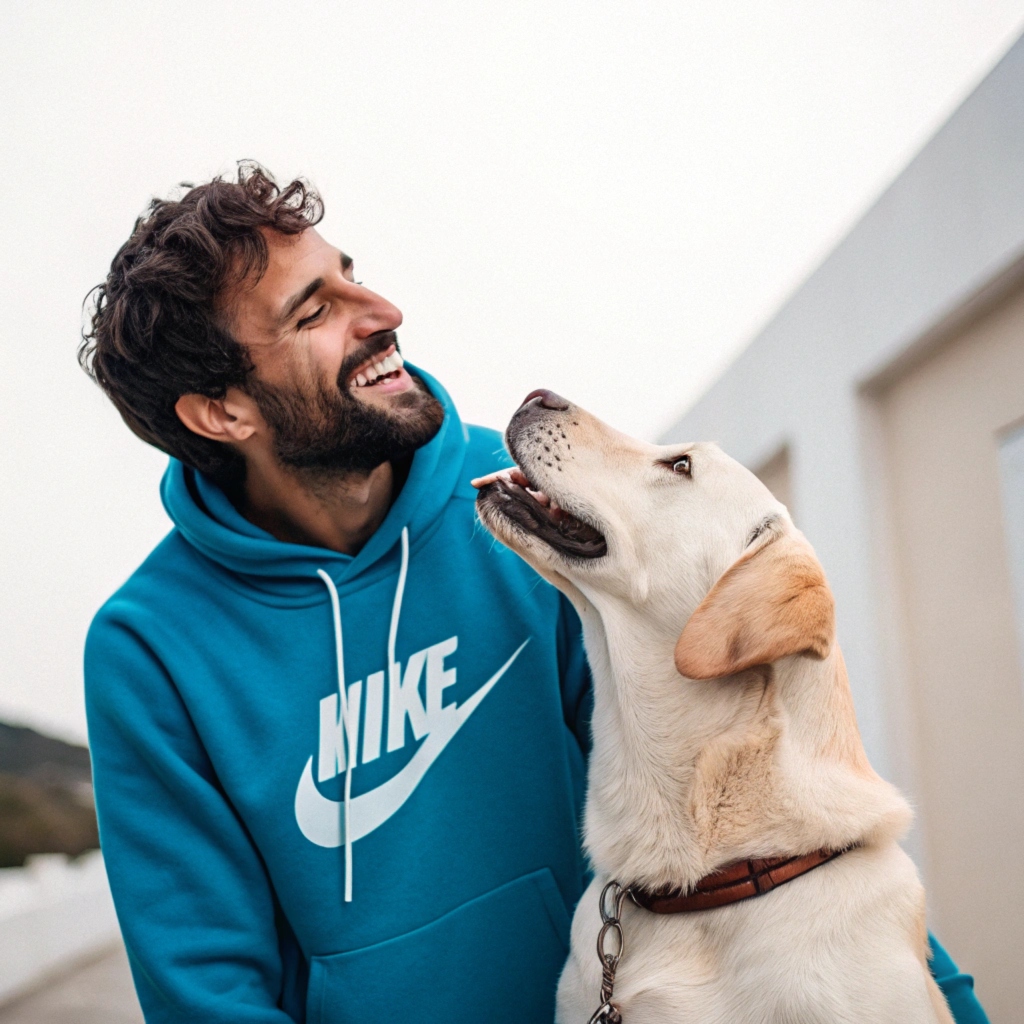
I’ve spent 10+ years in dog training, digging into what makes dogs (and their humans) tick. At Smart Dog Learning, I share my no-nonsense, fun approach to training so you can enjoy life with a well-behaved, happy pup—no boring lectures, just practical results 😉

